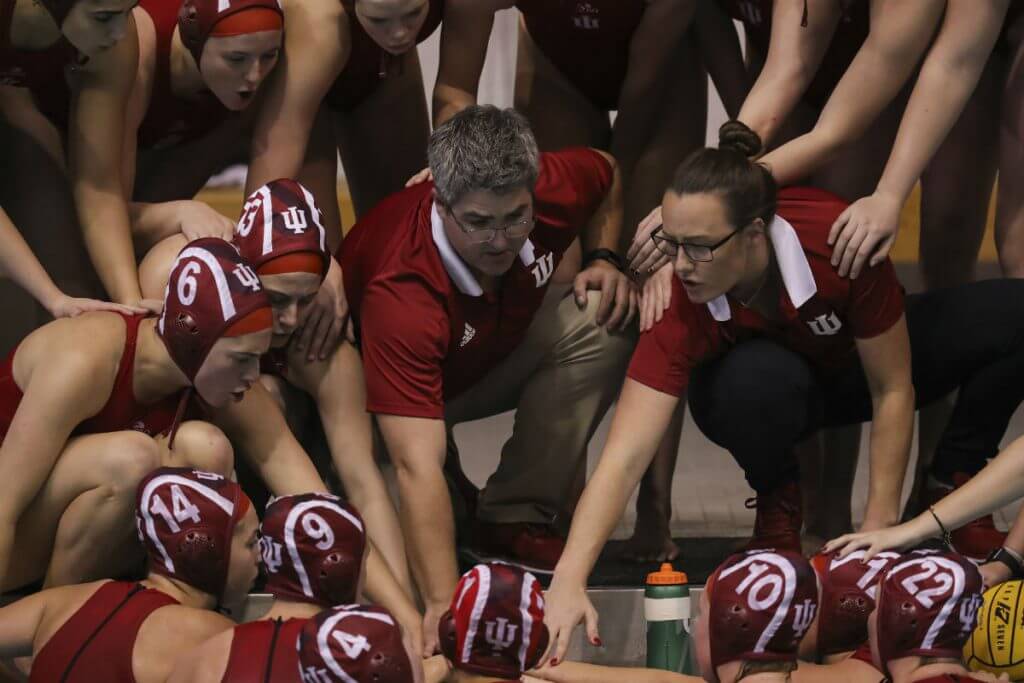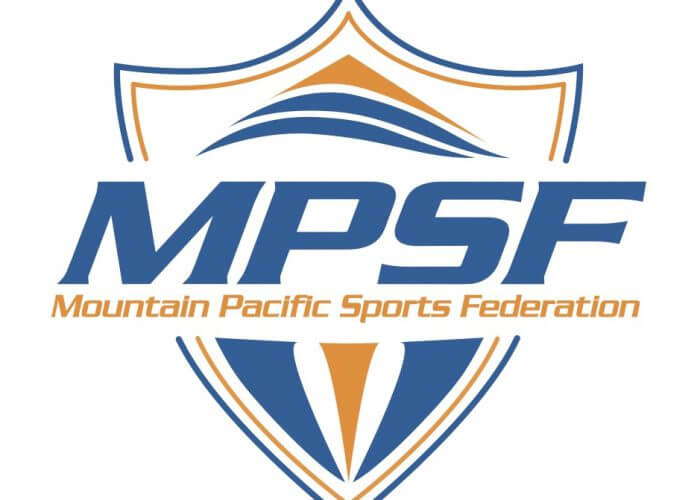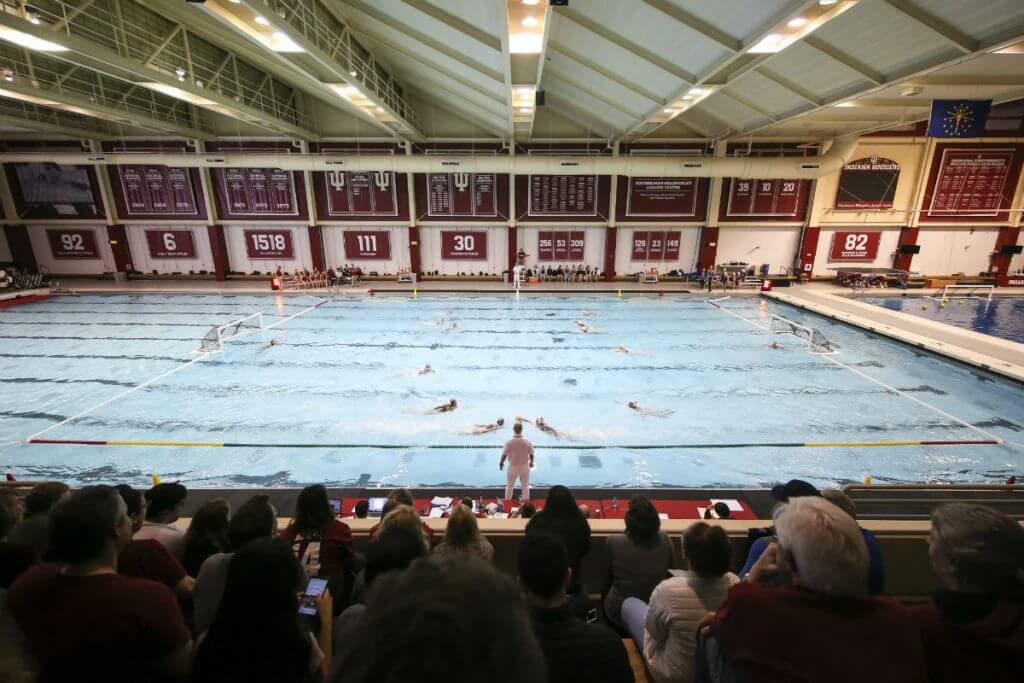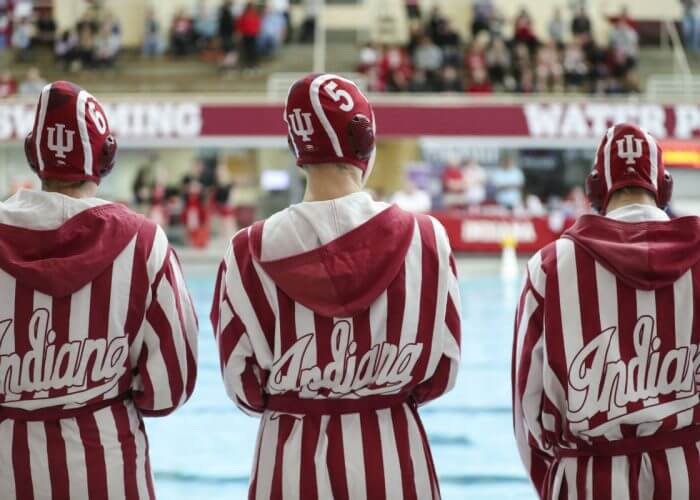Jump to MPSF is “Game Changer” for Indiana Women’s Water Polo

By Michael Randazzo, Swimming World Contributor
The past decade has seen a spike in conference realignments for a variety of NCAA intercollegiate sports, as major conferences, including the Big Ten, the Pac12 and others, have outgrown traditional regional boundaries.

Add Indiana University’s women’s water polo to those programs jumping conferences for the best in competition and exposure. On Friday the Mountain Pacific Sports Federation [MPSF], home to the country’s top men’s and women’s intercollegiate water polo programs, announced that the Hoosiers are joining their conference next season. By exiting the Collegiate Water Polo Association (CWPA) where they have competed since 2001, Head Coach Ryan Castle’s squad is throwing in with USC, Stanford, Cal, UCLA and Arizona State—the top five women’s teams in the U.S.—as well as San Jose State.
This is not the first time so called “Eastern” teams—typically programs east of the Mississippi—have jumped on the MPSF bandwagon. Penn State Behrend and Austin College, two Division III men’s programs, have also been admitted over the past few years. But those teams’ interaction with MPSF completion—two games at the conference’s year-end tournament—is so minimal as to be almost ceremonial.
Not so for the Hoosiers. A DI program that embraces the challenge of playing top teams, staring next spring Indiana will play a full schedule of MPSF opponents, an exciting development for polo in the Midwest and beyond.
Swimming World spoke with Coach Castle yesterday about this bold move that has sent ripples through polo circles all across America.

Counsilman Aquatics Center Photo Courtesy: Indiana Athletics
– What sort of schedule do you envision for next spring?
Our discussions with the MPSF have been on-going for over a year now. On the scheduling side we solved that problem pretty early—a month or two ago.
We’re going to have a full slate against all the MPSF teams. Due to the timing of when the voting happened, our new [opponents] had already finalized their travel budgets, Next year we’re going to be playing all of our opponents away. Thereafter in 2019-2020 we’re going to be in a normal, full rotation of all MPSF teams.
We’re still working out exact details of what travel will look like, but we’ve got some time for that. There’s obvious challenges—spring break and others—but for next year we’re going to be playing all of our games on the road.
We’ll travel to Stanford next year for the conference championship and then at the end of the cycle we will be hosting the MPSF Championship. [That’s] slated for 2025.
– There’s no question about the quality of MPSF teams; how exciting is it that Indiana will be hosting some of the worlds’ best women water polo players?
It’s huge for us. We play [MPSF] teams in tournaments—most of the time that’s a meeting in the second game of a tournament. You’re at a disadvantage when you’re meeting [MPSF teams] then, as their rosters are deeper. But playing them in a conference game changes things. There’s more on the line in those types of games—not that they’ve ever taken it easy.
For us to host a conference game against USC or UCLA is going to be great exposure for our program and will be great for exposing the sport. People around our area will look at the newspaper and go: “Wow, Stanford water polo is coming to Indiana.” It will get people’s attention. We’ll get more crowds—people driving down from Chicago, from Detroit, from Cincinnati, from Columbus and St. Louis.
I think it’s a game-changer for helping us grow the sport in the Midwest.
– As I’m sure your aware, the top MPSF teams are stocked with some of the world’s best players; how does joining the MPSF improve your program’s chances of recruiting top American and international players?
The MPSF is the best league in the world, and there’s a lot of appeal to that with elite American athletes as well as elite international athletes. The best want to play against the best. Doesn’t matter which sport you play.
Every MPSF team out there has elite international and American kids on their roster. The appeal on our side from the recruiting end is there are athletes out there looking for a world-class education and a strong Big Ten college experience combined with playing the best water polo. Being in MPSF will put us in that rotation for both their tournaments and conference play.
This is going to appeal to a different type of athlete who’s going to want those opportunities. It’s going to chase some athletes away.
The kids we’re looking for, they’re going to relish the opportunity of getting a great education, being at a Big Ten institution—which is a unique experience in and of itself—and also have, let’s call it the California water polo experience.
– How does bring on this caliber of player transform athletics at Indiana?
That’s a game-changer within our department. The rest of our sports are always going up against Michigan, Illinois and Ohio State. Our roster [of opponents] will be UCLA, Stanford; it stitches it up a notch. It’s also going to be good for the kind of kids who are going to give us consideration. In the box of what type of experience they’re looking for, this athletes can get the best of both worlds.
– Given the quality of MPSF competition, how do you view your program’s NCAA chances?
The primary consideration was to give our student athletes the best possible experience. And there were multiple aspects [to the decision] that positioned joining the MPSF as a no brainer.
The reality is it’s the toughest league in the world. So we’ve got a lot of work to do before we can think about being in the discussion for an at-large bid. Theoretically we have a few more opportunities by being in the MPSF—we’re going to have a higher RPI, we’re going to have a better strength of schedule—but we still have to win games. And to win games in that conference, you’ve got to have a deep roster and be committed to excellence every single day.
Having been in the situation before about an at-large berth at another institution, my staff and I know what we need to do to get there. And we’re heading there. It’s just a lot of hard work, and it’s going to come down to how we perform throughout the entire season, versus just trying to peak at the end.

Photo Courtesy: Indiana Athletics
– In making this switch, you potentially are impacting some well-establish rivalries with CWPA foes. How will this impact be felt, especially when it comes to long-time rival Michigan?
Michigan and Indiana are the only two Big Ten, Division I water polo programs in the Midwest. At this point in time we’re keeping our annual rivalry game with the Wolverines. They’ve got their goals; we didn’t have a big discussion about what we’re doing. We evaluated the opportunities and decided that this was in our best interest.
We’d love to keep that rivalry game going; how things play out in the conference in the future leaves things to be decided. I know we’ve secured our conference game for next year, and I’ve exchanged texts with Coach [Marcelo] Leonardi of Michigan and told him that we want to keep this going.
And I think we will. There’s a lot to be worked out. It’s how their conference plays out with scheduling that may interfere with when we traditionally have our game [at the end of the conference season].
I’ve got a lot of respect for the other [CWPA] schools. I’ve known many of those coaches for many years, going back to when I was an assistant at Hartwick. The coaches I’ve spoken to understand the rationale behind why [we made the move]; it’s nothing against their programs.
It ticked a lot of boxes of making sense for our program and where we want to go.



